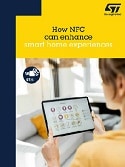
The Internet of Things (IoT) is changing the way we live in our homes. From traditional home appliances to HVAC systems, a wide range of home devices are now connected to the Internet or smartphones.
Smart technologies reshape our relationship with home devices, and give users enhanced safety, comfort, convenience, and energy efficiency.




